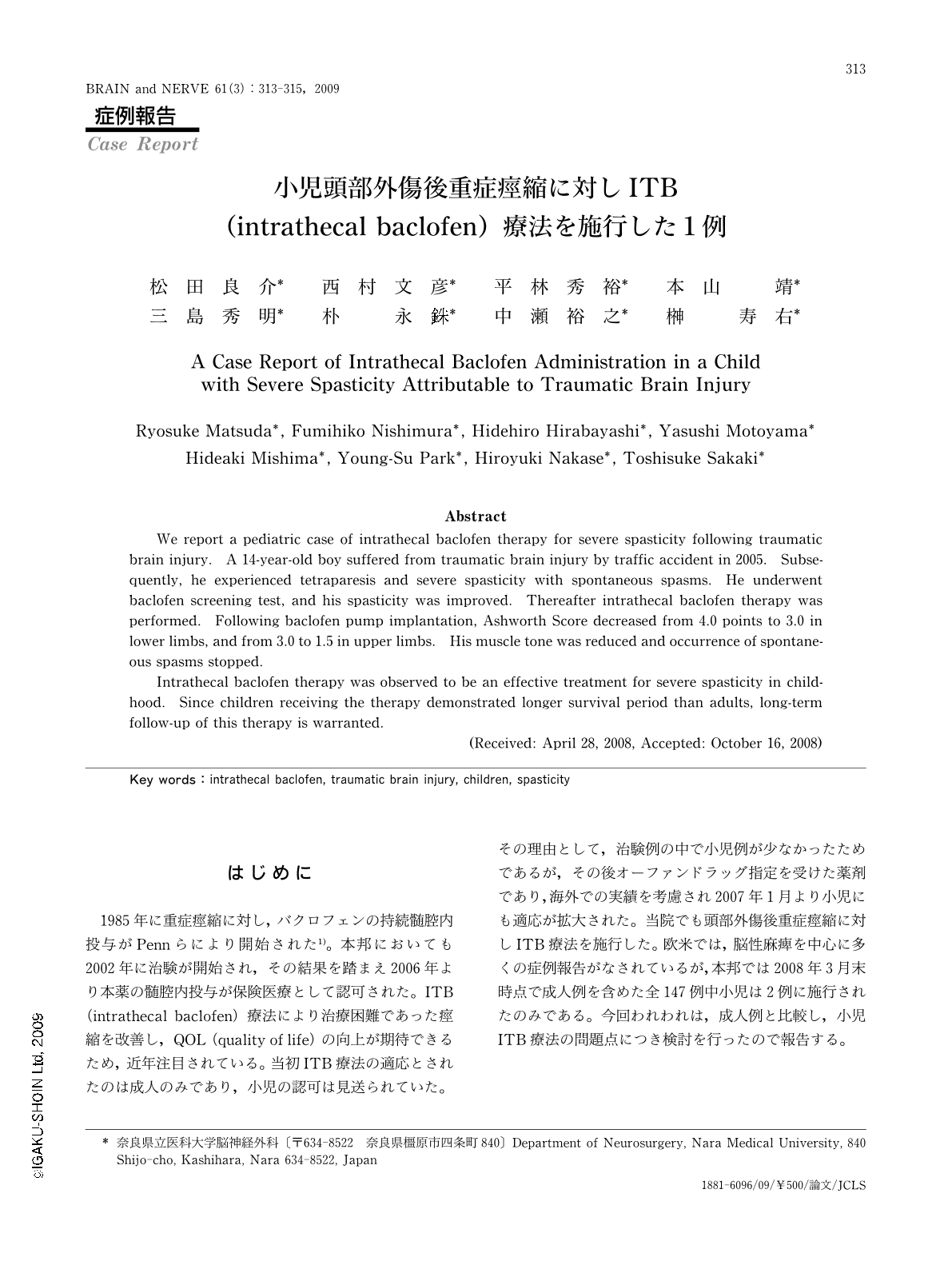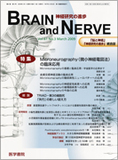Japanese
English
- 有料閲覧
- Abstract 文献概要
- 1ページ目 Look Inside
- 参考文献 Reference
はじめに
1985年に重症痙縮に対し,バクロフェンの持続髄腔内投与がPennらにより開始された1)。本邦においても2002年に治験が開始され,その結果を踏まえ2006年より本薬の髄腔内投与が保険医療として認可された。ITB(intrathecal baclofen)療法により治療困難であった痙縮を改善し,QOL(quality of life)の向上が期待できるため,近年注目されている。当初ITB療法の適応とされたのは成人のみであり,小児の認可は見送られていた。その理由として,治験例の中で小児例が少なかったためであるが,その後オーファンドラッグ指定を受けた薬剤であり,海外での実績を考慮され2007年1月より小児にも適応が拡大された。当院でも頭部外傷後重症痙縮に対しITB療法を施行した。欧米では,脳性麻痺を中心に多くの症例報告がなされているが,本邦では2008年3月末時点で成人例を含めた全147例中小児は2例に施行されたのみである。今回われわれは,成人例と比較し,小児ITB療法の問題点につき検討を行ったので報告する。
Abstract
We report a pediatric case of intrathecal baclofen therapy for severe spasticity following traumatic brain injury. A 14-year-old boy suffered from traumatic brain injury by traffic accident in 2005. Subsequently, he experienced tetraparesis and severe spasticity with spontaneous spasms. He underwent baclofen screening test, and his spasticity was improved. Thereafter intrathecal baclofen therapy was performed. Following baclofen pump implantation, Ashworth Score decreased from 4.0 points to 3.0 in lower limbs, and from 3.0 to 1.5 in upper limbs. His muscle tone was reduced and occurrence of spontaneous spasms stopped.
Intrathecal baclofen therapy was observed to be an effective treatment for severe spasticity in childhood. Since children receiving the therapy demonstrated longer survival period than adults, long-term follow-up of this therapy is warranted.
(Received: April 28,2008,Accepted: October 16,2008)

Copyright © 2009, Igaku-Shoin Ltd. All rights reserved.


